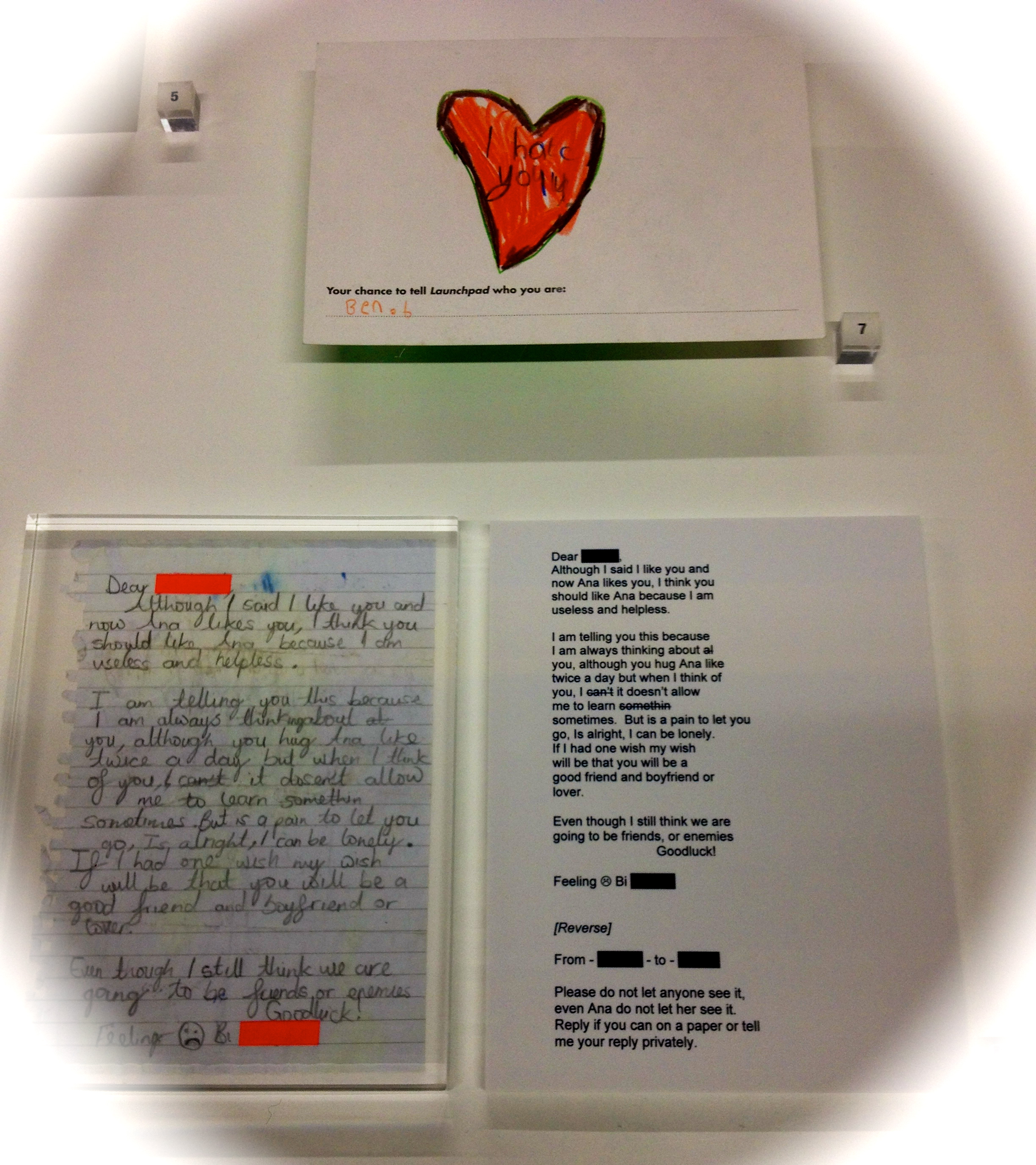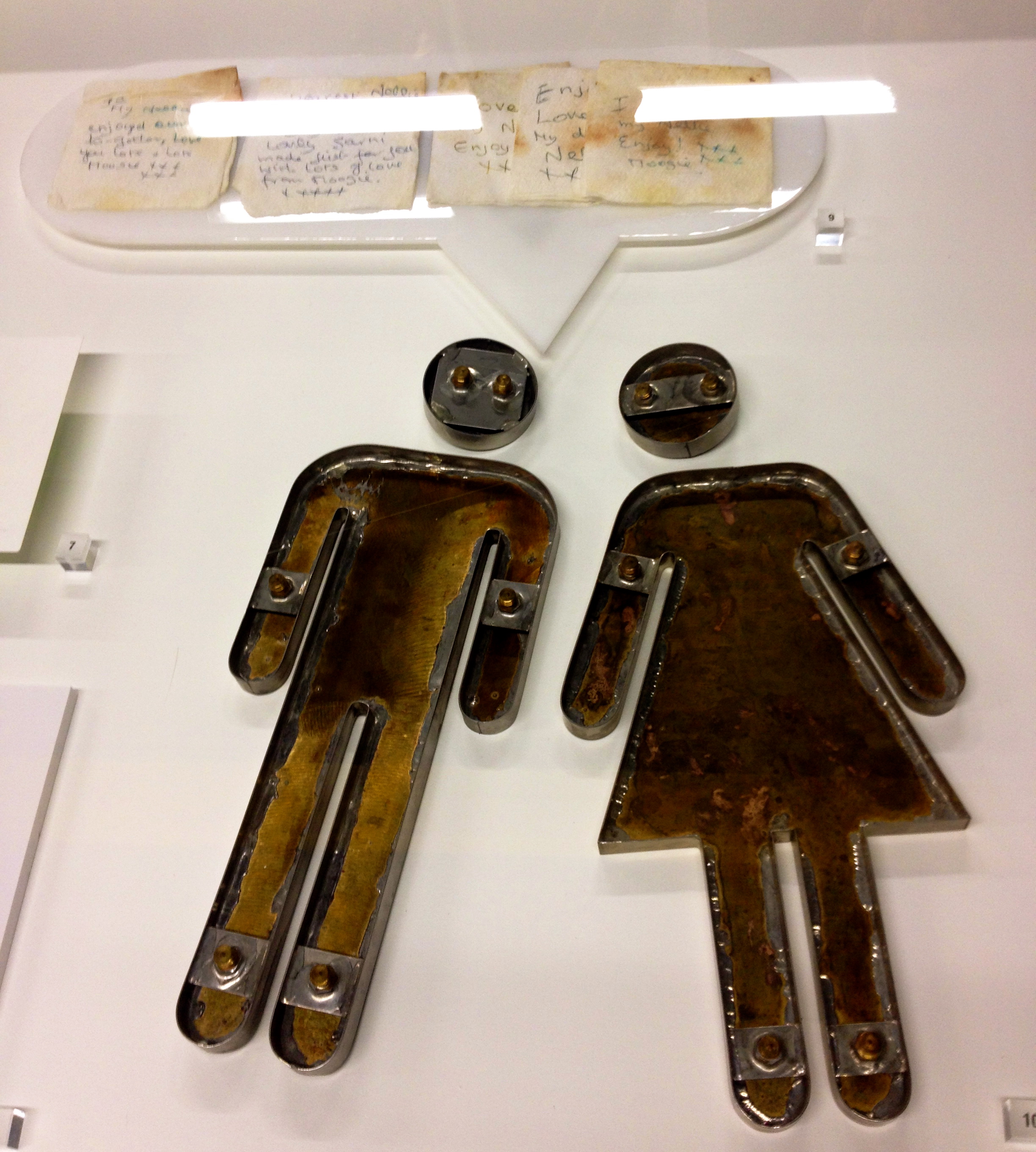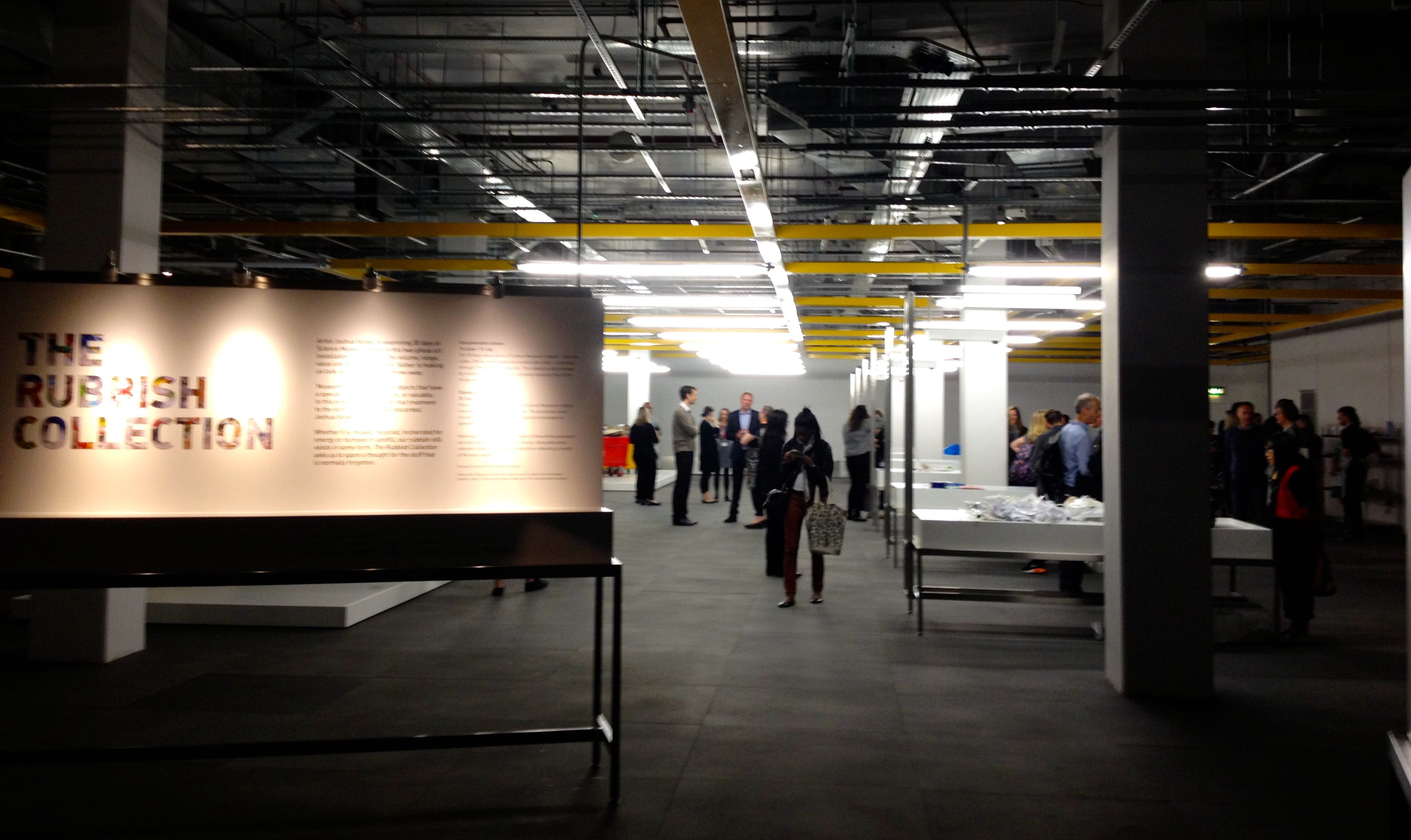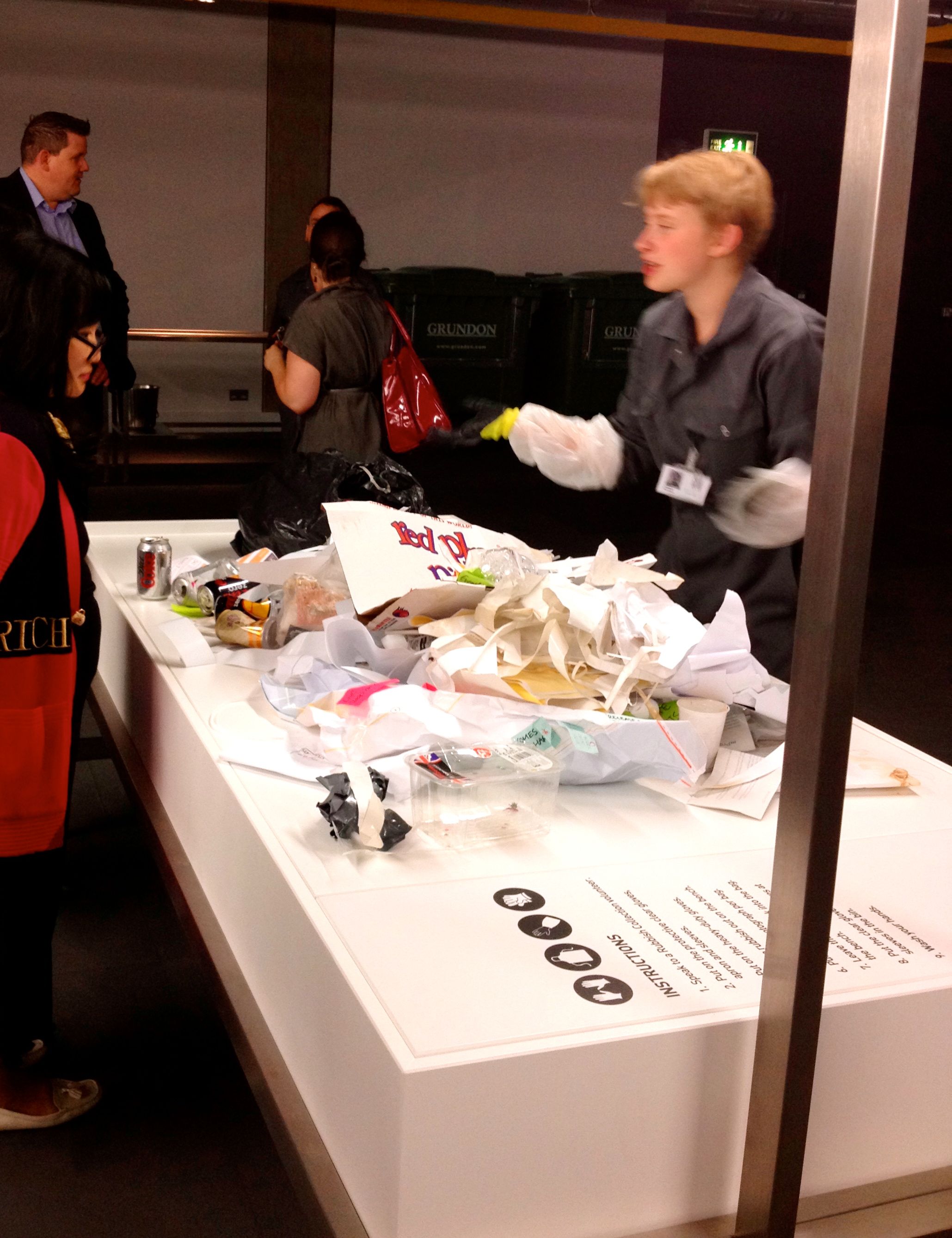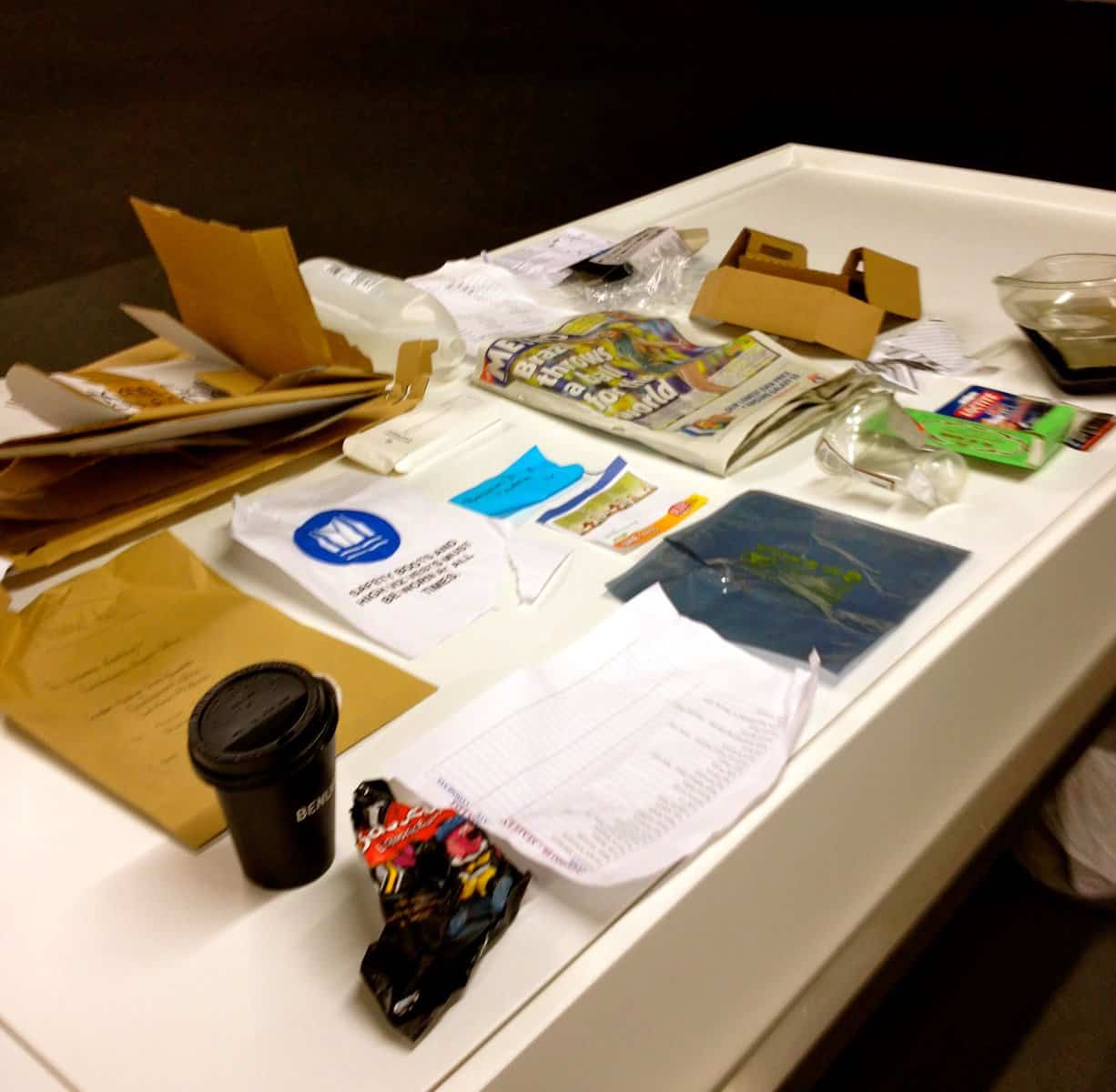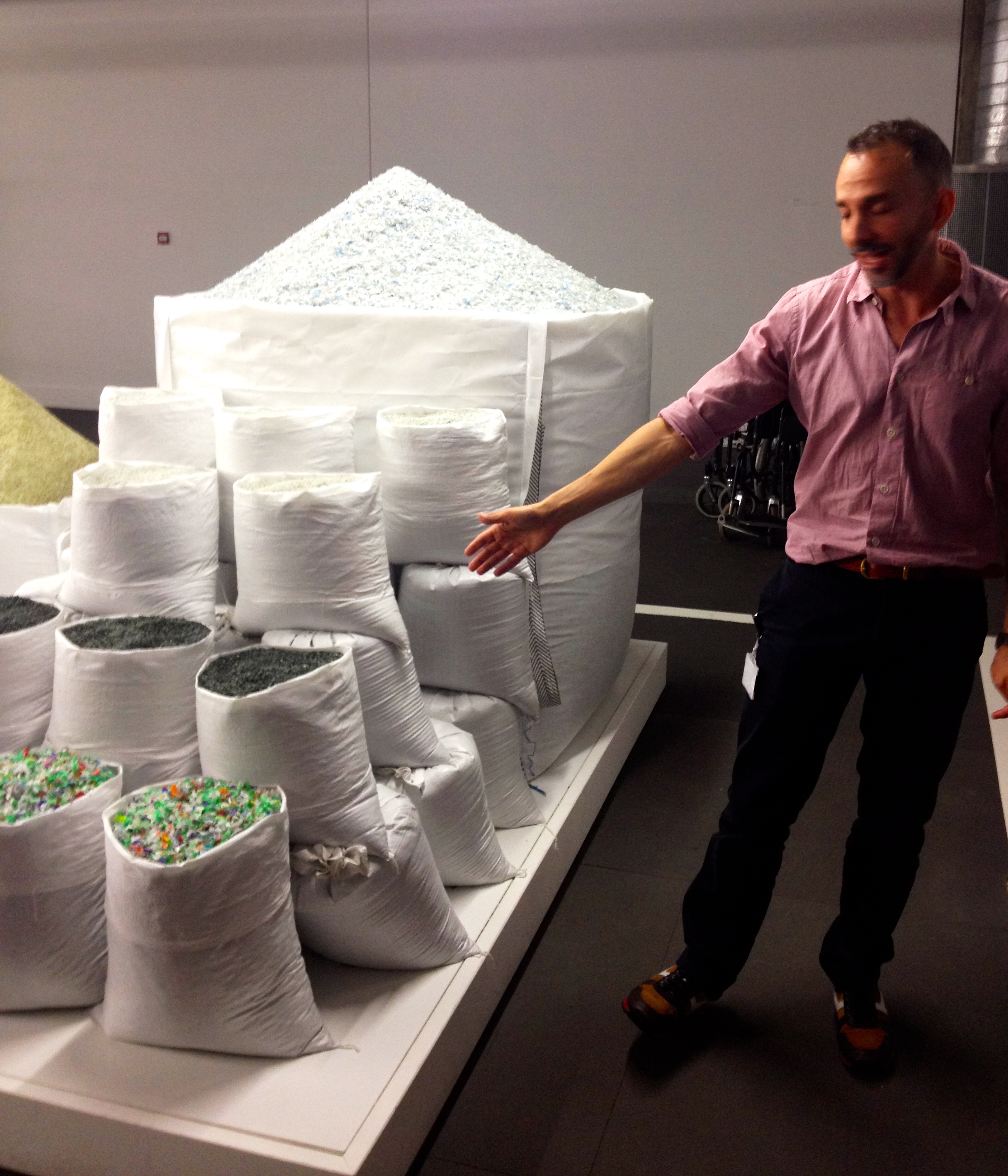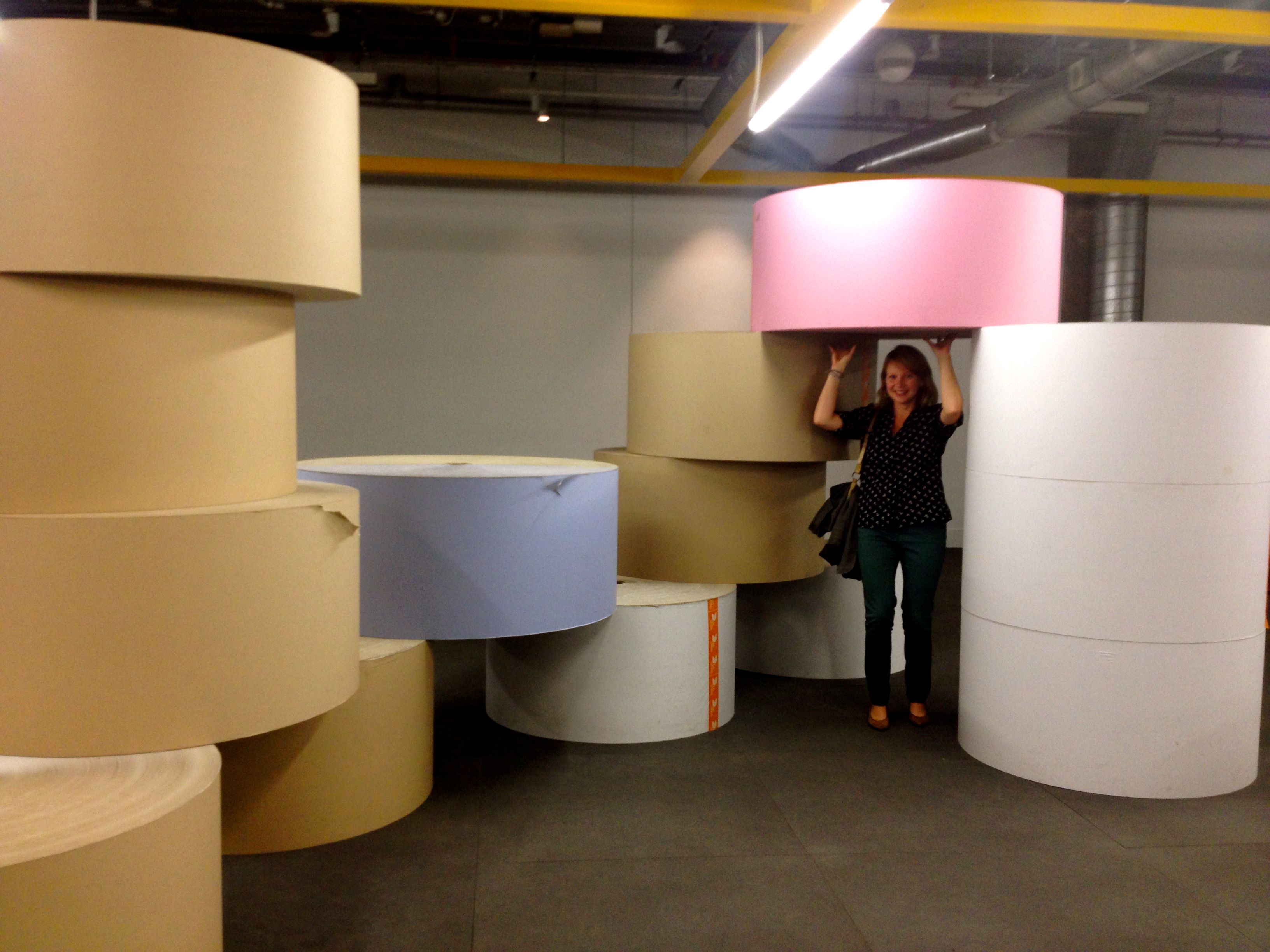Ever wondered or thought about the scale and types of rubbish that would go through an institution or museum? No? Yes? Not really……. Well the artist Joshua Shoefer did and after apparently a lot of perseverance managed to get the Science Museum in London to as well.
The concept itself sounds simple. Imagine a box with an Input arrow going in one end and an output arrow going out the other representing items coming in and the rubbish going out. Now multiply this to the tens and hundreds of products and materials going in and quite a few different streams going out. That in itself is a first eye opener if you’re thinking about materials and resource flows. Hundreds of different products will be arriving (and probably in each product more than one type of material), while on the other end all of this variety gets separated in to a limited number of different waste and recycling streams.
http://youtu.be/6w-aMYGO4cU
In the evening viewing of the exhibition we were lucky enough to get a personal tour around the exhibition from the artist himself, now fairly sparsely arranged displays of the different findings.You had this eerie feeling that you were going down to the morgue of the Science Museum, perhaps where science goes to die?
You can also read a full narration of the exhibit and the thinking behind it at the Science Museums blog and other photographs. This being the case I’ll keep it brief with just a few pictures, thoughts and observations.
1st Stage
In the 1st stage, that lasted a month, every last bag of rubbish (apart from a few more hygiene related that would be shielded from the public), would be laid out as if on an autopsy slab and photographed as a lasting record. This is actually quite a similar process to a waste compositional analysis that is often undertaken to understand more of the details of the residual waste or contamination in councils or businesses with the aims to understand in more detail what’s going on in people’s bins in order to improve.
At the Science museum it was the public who could don an apron and gloves and get stuck in rooting through and laying it all out (must have had quite a risk assessment in advance).
2nd Stage
After the first month of collecting and cataloguing the exhibition then went on to the next stage of measuring the weights and amounts of the different materials and objects and tracing their journey to what they become. Here the room was relaid out with the findings in groupings.
I think what was missing here was the telling and seeing of the story in between, the journey that the plastic bottles go on before being shredded into flakes and pelletised. The paper being shredded and mulched and remade into paper and the incineration of the residual into bricks. Without seeing these processes the chain remains a mystery, a sense that they may not really go there and these displays are a disguise of landfill. We need the links to be made in between and people to see that it’s possible, it’s not easy, but it’s possible and better for the environment. This is partly covered in the science museum blog, but people would have to find it.


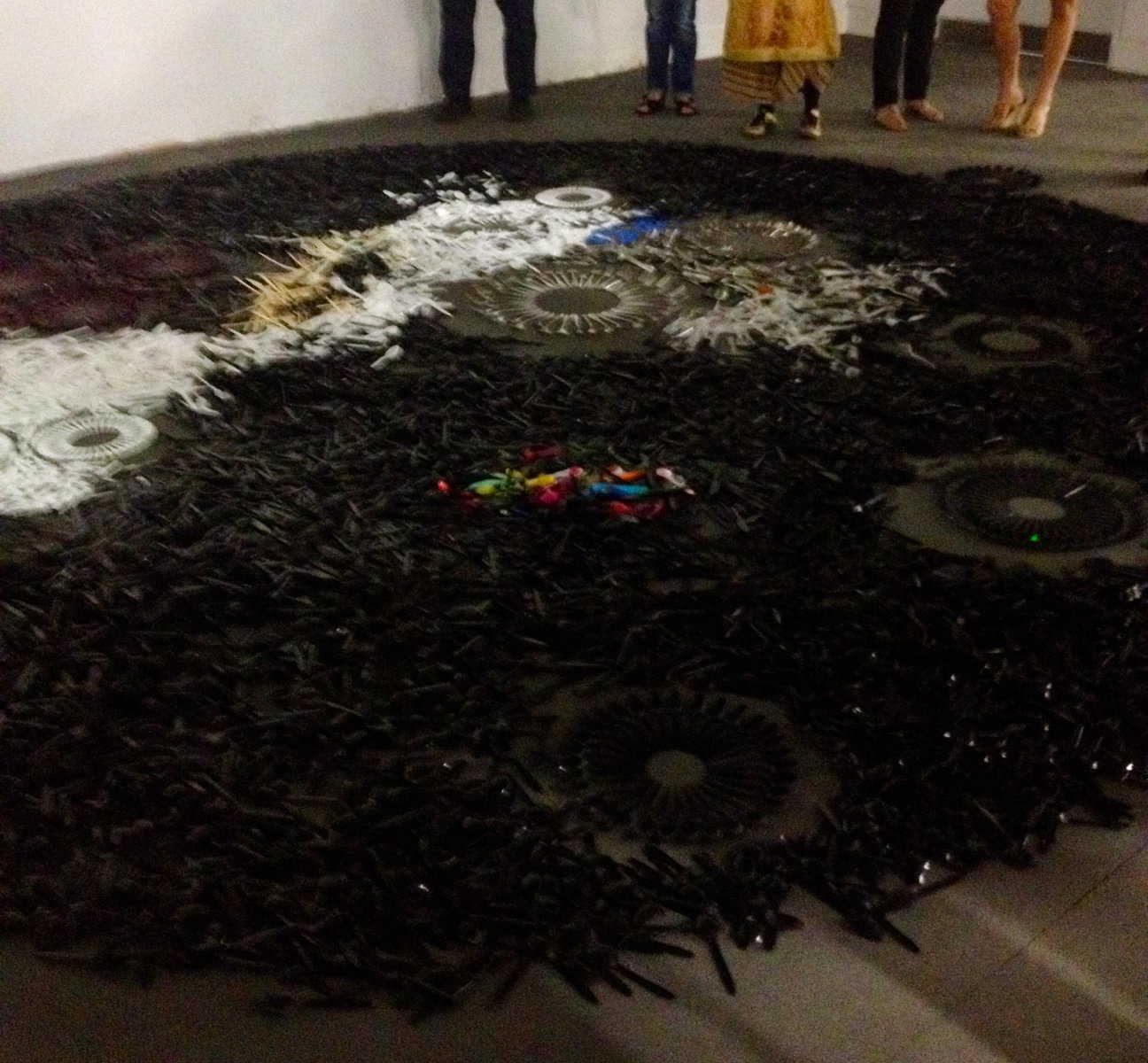
I hope the science museum learns from this as well, not just a piece of art but a way to understand what’s going on inside their system. It hasn’t given them all the answers and probably raised more questions. Who are the sandwich binners? Are children the worst recycling offenders? Do we need plastic cutlery and what to do with our old tired displays? And perhaps we should put better recycling labels on our bins………..
